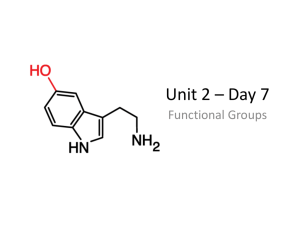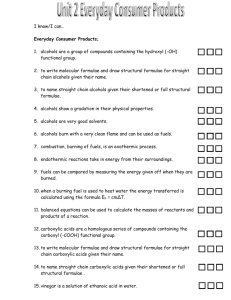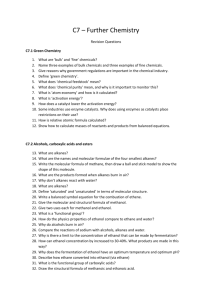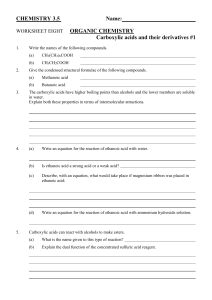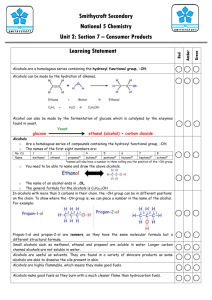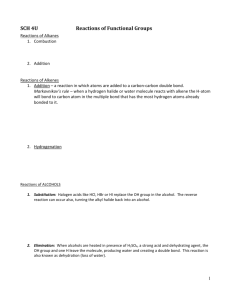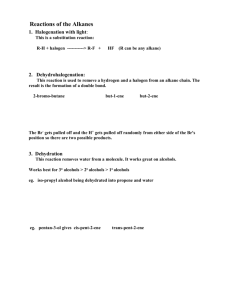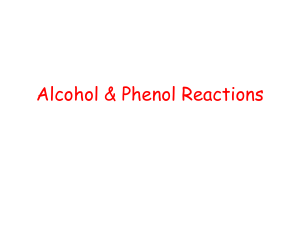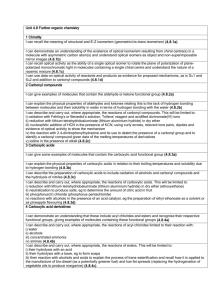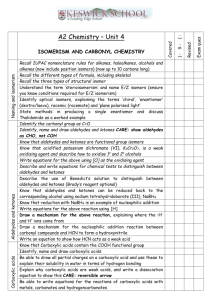C3 5 organic chemistry checklist
advertisement
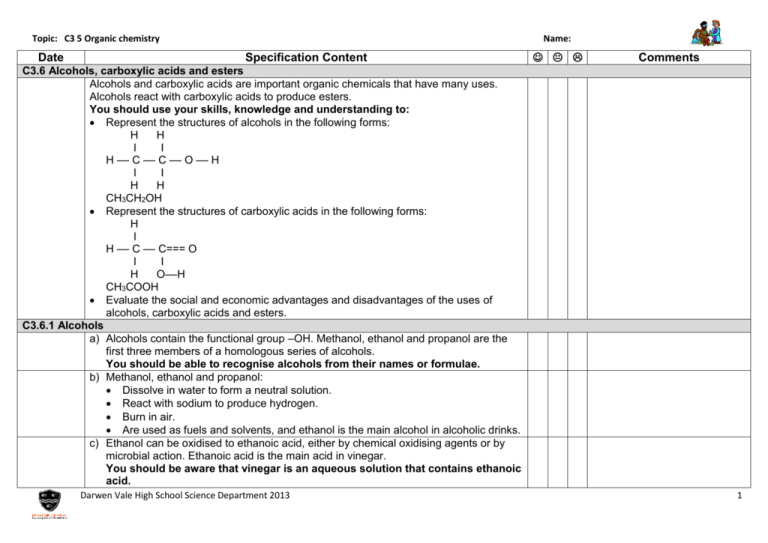
Topic: C3 5 Organic chemistry Date Name: Specification Content Comments C3.6 Alcohols, carboxylic acids and esters Alcohols and carboxylic acids are important organic chemicals that have many uses. Alcohols react with carboxylic acids to produce esters. You should use your skills, knowledge and understanding to: Represent the structures of alcohols in the following forms: H H I I H –– C –– C –– O –– H I I H H CH3CH2OH Represent the structures of carboxylic acids in the following forms: H I H –– C –– C=== O I I H O––H CH3COOH Evaluate the social and economic advantages and disadvantages of the uses of alcohols, carboxylic acids and esters. C3.6.1 Alcohols a) Alcohols contain the functional group –OH. Methanol, ethanol and propanol are the first three members of a homologous series of alcohols. You should be able to recognise alcohols from their names or formulae. b) Methanol, ethanol and propanol: Dissolve in water to form a neutral solution. React with sodium to produce hydrogen. Burn in air. Are used as fuels and solvents, and ethanol is the main alcohol in alcoholic drinks. c) Ethanol can be oxidised to ethanoic acid, either by chemical oxidising agents or by microbial action. Ethanoic acid is the main acid in vinegar. You should be aware that vinegar is an aqueous solution that contains ethanoic acid. Darwen Vale High School Science Department 2013 1 Topic: C3 5 Organic chemistry Date Name: Specification Content Comments C3.6.2 Carboxylic acids a) Ethanoic acid is a member of the carboxylic acids, which have the functional group – COOH. You should be able to recognise carboxylic acids from their names or formulae. b) Carboxylic acids: Dissolve in water to produce acidic solutions. React with carbonates to produce carbon dioxide. React with alcohols in the presence of an acid catalyst to produce esters. Do not ionise completely when dissolved in water and so are weak acids. (HT only) Aqueous solutions of weak acids have a higher pH value than aqueous solutions of strong acids with the same concentration. (HT only) C3.6.3 Esters a) Ethyl ethanoate is the ester produced from ethanol and ethanoic acid. Esters have the functional group –COO–. They are volatile compounds with distinctive smells and are used as flavourings and perfumes. You should be able to recognise a compound as an ester from its name or its structural formula. Darwen Vale High School Science Department 2013 2

